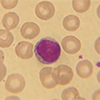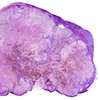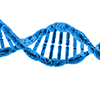Test Repertoire
Breast Cancers
The section offers a comprehensive HER2 analysis service for breast cancers. Immunohistochemistry, with the Roche/Ventana 4B5 antibody, is used to screen patients for expression levels of the HER2 protein and identify those “over-expressers” who are most likely to benefit from treatment with Trastuzumab (Herceptin). Where expression levels are equivocal, FISH is used to determine amplification at the gene level. Service users may access the full service, or submit cases for FISH analysis only if performing their own IHC.
Gastric Cancers
As with breast cancers, HER2 analysis is performed in Gastric cancers to assist in predicting which therapies patients will benefit from. As well as this standard-of-care testing, mismatch-repair analysis and ISH for EBV are also available on demand.
Colorectal Cancers
RAS (KRAS and NRAS) mutations confer resistance to anti-EGFR monoclonal antibodies, and act as a negative predictive marker for these therapies. The National Institute for Clinical Excellence (NICE) has approved the use of Cetuximab and Panitumumab for the treatment of metastatic colorectal cancer in patients who carry normal, “wild-type” RAS genes. RAS testing is mandatory prior to their prescription.
BRAF gene mutation analysis is provided on demand for colorectal cancer patients. This can be used to inform patient management or, in combination with mismatch repair expression (see below), to help establish the presence of the inherited cancer syndrome HNPCC (Lynch syndrome).
We are a reference centre for Mismatch repair (MMR) protein expression analysis in patients suspected to have Lynch syndrome; we test over 700 cases a year. immunohistochemical testing allows identification of patients without normal DNA repair processes, who are therefore more likely to have Lynch syndrome. In patients with MLH1 loss we can also perform reflex testing for BRAF V600E mutations and MLH1 promoter methylation status. Mismatch repair protein expression is also requested increasingly to help inform patient chemotherapy decisions, as patients lacking MMR expression appear to have reduced sensitivity to certain cytotoxic treatments.
BRAF p.Val600Glu (“V600E”) specific immunohistochemistry (IHC) is available on demand.
Lung Cancers
EGFR mutations correlate with the effectiveness of certain Tyrosine Kinase Inhibitors (TKIs) such as Gefitinib, Erlotinib, Afatinib, and Osimertinib against some Non-Small Cell Lung Cancers (NSCLCs). Activating mutations are reported to correlate with significant responses to such treatment, whilst certain other mutations correlate with resistance to first- and second-generation TKIs, but predict response to newer agents. EGFR mutation status is therefore vital in deciding the most appropriate treatment regime. The service also offers EGFR analysis on circulating tumour DNA extracted from plasma. This is of particular use in testing patients for acquired, targetable secondary mutations when they begin to progress whilst on treatment that targets their primary EGFR mutation. It may also function as a surrogate where clinical circumstances make obtaining a more representative tissue specimen for initial diagnostic testing difficult or impossible. The service can provide specialised collection tubes for users wishing to submit samples.
Anaplastic lymphoma kinase (ALK) gene fusions can be targeted with specific inhibitors, and translocation analysis using immunohistochemistry or Fluorescence In-Situ Hybridisation (FISH) is now standard alongside EGFR mutation analysis to determine 1st line treatment for lung NSCLC. In addition to ALK analysis, the service provides FISH and IHC testing for ROS1 fusions in lung cancer.
PD-L1 expression analysis is also important in informing first (and second) line anti PD-1 / anti-PD-L1 monoclonal antibody treatment for lung NSCLC. A relatively recent addition to the testing landscape, in 2016, immunohistochemical analysis using companion-diagnostic antibodies specific to the relevant treatments gives a quantitative expression result.
Gastrointestinal Stromal Tumours (GIST)
Up to 90% of all malignant GISTs harbour gain-of function mutations in the KIT / PDGFRA genes. Primary mutations have been described in exons 8, 9, 11, 13 & 17 of KIT, and exons 12, 14 & 18 of PDGFRA. Secondary (acquired or treatment associated) mutations have also been described. Selective TKIs have a high response rate in patients with advanced GISTs, which are largely radiotherapy and chemotherapy resistant. Evidence suggests that the type and location of KIT or PDGFRA mutations in GISTs predicts the response to TKI treatment.
Melanomas
The BRAF gene is frequently mutated in human melanomas, with mutations seen in 35-50% of cases. Mutations lead to constitutive activation and aberrant signalling, and subsequent malignant behaviour. Drugs that treat those cancers by inhibiting BRAF are now licensed for use in metastatic disease.
The NRAS gene is also frequently mutated in melanoma; between 10-20% of tumours show an NRAS mutation, and these are thought to be mutually exclusive with alterations in BRAF. NRAS testing is offered as a supporting aid in selecting patients for access to novel therapeutic interventions or clinical trials targeting the pathway activated by mutant NRAS.
Mutations in the KIT gene are seen in Acral and mucosal melanomas and represent potential therapeutic targets.
PD-1 and PD-L1 inhibition, particularly in combination with anti-CTLA4 therapies, has shown profound and sustained effects against metastatic melanoma. Whilst PD-L1 expression analysis is not mandatory for prescription, as it is with some lung NSCLC therapies, it has been shown to be helpful in informing decisions on whether to use mono- or combination-therapy.
Brain Tumours
The revision of the WHO classification of CNS tumours in 2016 has expanded the range of essential and desirable molecular analyses performed.
Epigenetic silencing of the MGMT (O6-methylguanine–DNA methyltransferase) gene by promoter methylation is associated with longer overall survival in patients with glioblastoma who, in addition to radiotherapy, received alkylating chemotherapy with temozolomide. High levels of MGMT activity in cancer cells create a resistant phenotype by hindering the therapeutic effect of alkylating agents and may be an important determinant of treatment failure.
Combined loss of chromosome arms 1p and 19q (denoted as 1p-/19q-) is a powerful predictor of chemotherapeutic response and survival in oligodendrogliomas. A FISH based analysis of these loci is available as a tool to assist patient management. More recently it has been employed diagnostically in the differentiation of ATRX-positive Oligodendrogliomas and Astrocytomas.
Mutation analysis of the IDH1 and IDH2 genes is used as a supplement to immunohistochemistry. Whilst the IDH1 R132H-specific antibody detects the majority of IDH mutated tumours, mutation analysis for rarer R132 variants along with IDH R100 and IDH2 R172 mutations is used in particular relevant clinical scenarios.








